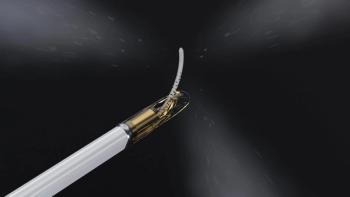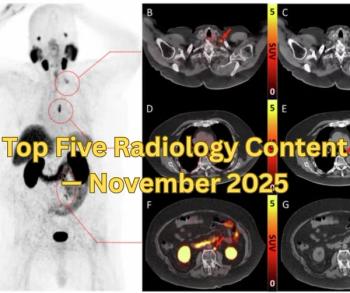
CTA beats MRA, ultrasound for early evaluation of peripheral arterial disease
Multislice CT angiography should be the preferred choice over MR angiography or duplex ultrasound for initial evaluation of patients with suspected peripheral arterial disease.
Multislice CT angiography should be the preferred choice over MR angiography or duplex ultrasound for initial evaluation of patients with suspected peripheral arterial disease.
Dr. Rody Ouwendijk of the Erasmus University Medical Center in Rotterdam, the Netherlands, drew this conclusion from a four-hospital study involving 514 patients with arteriosclerosis in their lower limbs. Patients were randomly selected to receive CTA, MRA, and duplex ultrasound. The clinical and financial effects of the studies were evaluated six months later.
Results, published in the May American Journal of Roentgenology (2008:190:1349-1357), indicate that CTA and MRA were relatively equivalent to one another clinically and demonstrably better than duplex ultrasound.
At an average cost of €104 per procedure, duplex ultrasound was less expensive than CTA (€163) or MRA (€472).
The advantage shifted to CTA and MRA, however, when vascular radiologists and surgeons surveyed for the study had significantly more therapeutic confidence in those two modalities than duplex ultrasound. Within 60 days after initial testing, more additional vascular imaging tests were performed on the patients who had received duplex ultrasound first than on patients who were evaluated with CTA or MRA.
No significant differences were seen in the number of additional tests for patients in the CTA and MRA groups or for quality-of-life measures for patients evaluated with any of the three modalities.
The potential for saving money with CTA led Ouwendijk and colleagues to recommend that modality, considering that its clinical performance was about the same as MRA and demonstrably better than duplex ultrasound.
The main disadvantages of CTA, established in the published medical literature, are patient exposure to ionizing radiation, the use of potentially nephrotoxic iodinated contrast media, and the confounding effects of vessel wall calcifications on image intrepretation.
For more information from the Diagnostic Imaging archives:
Newsletter
Stay at the forefront of radiology with the Diagnostic Imaging newsletter, delivering the latest news, clinical insights, and imaging advancements for today’s radiologists.


























